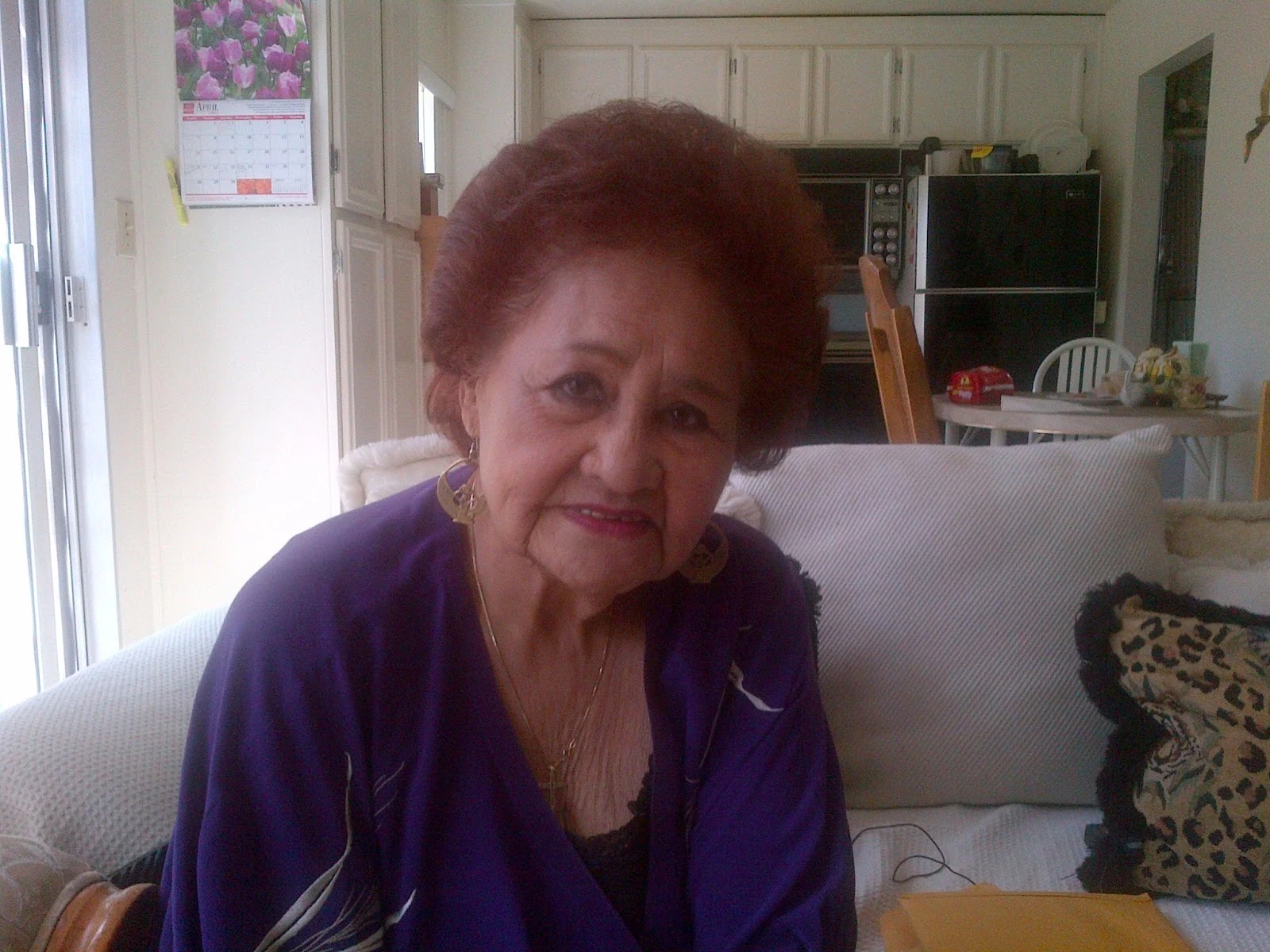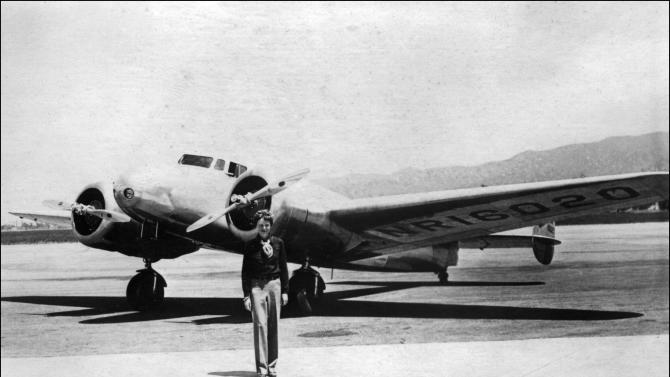http://news.nationalgeographic.com/2015/05/150528-amelia-earhart-spink-marshall-islands-aviation/
Important to note; we are not interested in who or what or why or how these events occurred. We are not interested in talking about the theories of how she wound up on Mili Atoll.
We are passionate about finding out the truth of what happened to Amelia Earhart to honor her sacrifice for the nation. And that is, at its core, what happened to her.
She made an incredible landing on an atoll, not something many pilots could do. Why was she so far off course? We don't know. We can guess that it's because she wasn't "over" Howland when she radioed she was - in fact she was 250 miles north west of the Howland.
But we don't know that for a fact. But we do know that she came down in Mili Atoll.
We do know she was picked up by the Japanese and transported to Saipan. That her plane and Fred Noonan went with her.
We do know that the plane was put in a hangar on Aslito airfield. That's where it was found in June of 44. We do know that she was incarcerated and died on Saipan.
There are multiple reports about how she died. But how she died doesn't reflect on how she lived. She lived with courage, and because of who she was - an American pilot flying in the wrong part of the Pacific - she wound up in Japanese hands.
We don't know how much she suffered, or if she suffered. We do know that people in the US knew she was there. We do know that US Marines were asked to look for her. We do know that her briefcase was found, and then her plane.
And the Electra was destroyed by US forces not long after that. We have multiple eyewitnesses, both islanders and US Marines.
The results of these tests will be at the end of July, early August. And that will not be the end of the story of what happened to her - it will be the beginning of the end of the story. She deserves closure, and we are determined to help her achieve it. Read the article below, from the National Geographic website, written by David Lande:
"One Man’s Dogged Search for Amelia Earhart"
One Man’s Dogged Search for Amelia Earhart
Teacher has spent $50K trying to prove the aviator didn’t crash into the Pacific -- and instead landed on a tiny island.
Picture of Amelia Earhart standing in front of the Lockheed Electra plane
Internationally famous as a trouser-clad, tousle-haired, female flier, Amelia Earhart stands in front of the Lockheed Electra she hoped to fly around the world. With only 7,000 miles to go on the 29,000-mile journey, she and navigator Fred Noonan took off from Lae, New Guinea, on July 2, 1937, and disappeared over a vast stretch of the Pacific Ocean.
PHOTOGRAPH BY SSPL, GETTY
By David Lande, National Geographic
PUBLISHED MAY 28, 2015
5
At a gathering of researchers near Seattle, a piece of Amelia Earhart’s plane is reverently passed hand-to-hand around a conference table. The authenticity of the artifact is undisputed—a rarity in the contentious world of Earhart aficionados. It was removed from Earhart’s Lockheed Electra during a repair job in the spring of 1937, and a forward-thinking mechanic rescued it from a trash bin. Just a few months later, Earhart and her Electra would be lost in an attempted round-the-world flight.
What happened to Amelia Earhart? Depends on whom you ask. Some say it’s obvious: She ran out of gas over a vast stretch of the Pacific, splashed into the water, and vanished. Others say she landed and eventually died on an island now called Nikumaroro, some 350 miles (563 kilometers) south of her intended refueling stop on Howland Island.
But a 53-year-old high school science teacher from Washington State named Dick Spink believes a different theory: Her plane set down in the Marshall Islands, far off course, on a tiny atoll named Mili.
Picture of a scrap of metal from the Lockheed Electra plane
After sustaining heavy damage in a failed takeoff attempt from Hawaii, Earhart’s Lockheed was repaired in California in the spring of 1937. A mechanic saved this original section of aluminum skin from the airplane’s horizontal stabilizer.
(Photo by Richard Martini)
“The world needs to know this,” Spink says. “I heard a consistent story from too many people in the Marshalls to dismiss it. They say, ‘She landed at Mili. Our uncles and aunts, our parents, and our grandparents know she landed here.’ ”
The Marshallese accounts were so convincing that Spink has spent $50,000 of his own money searching for the spot where Earhart landed. He contends that the islanders’ stories will be borne out by scientific proof.
Which is why these eight researchers—including engineers, metallurgists, and aircraft technicians—are gathered around a conference table and joined via teleconference by two scientists from Alcoa, original supplier of the aluminum used in Earhart’s plane.
After examining the authentic piece, the group passes around a half-dozen other parts—jagged, weathered, and corroded aluminum sealed in bags like evidence from a crime scene. Some are still encrusted with sand and bits of coral from the Marshalls, where they were found recently. One still has a hint of reddish paint—perhaps a faded match to the reddish-orange trim of Earhart’s plane.
Picture of Mili Atoll in the Marshall Islands
Some researchers believe crescent-shaped Mili Atoll in the Marshall Islands is where Amelia Earhart landed in desperation after failing to locate her intended fuel stop at Howland Island, some 800 miles to the southeast.
Putting the pieces together
Dick Spink isn’t the originator of the Marshall Islands theory. It first came to global attention during the 1960s with the publication of Paul Briand’s book Daughter of the Sky, as well as CBS correspondent Fred Goerner’s The Search for Amelia Earhart. (The fascination with Earhart continues; a crew trying to fly a solar-powered plane around the world is planning to embark on what it calls the “Earhart leg” of its trip, across the unforgiving Pacific.)
Goerner’s book—a bible of sorts to many Marshall Islands believers—argues that Earhart and her navigator Fred Noonan were taken prisoner by the Japanese after landing in the Marshalls and transported by ship to Saipan, where they died in captivity.
Spink counts himself among Goerner’s disciples, but he didn’t come to faith by reading his book. In fact, he hadn’t read anything about Earhart when he first traveled to the Marshall Islands for a sideline business venture. “I just assumed everyone believed that she disappeared when she sank in the ocean,” he says.
Then, three years ago, Spink was having dinner with Marshallese friends when he asked an innocent question: “Didn’t Amelia Earhart disappear in this part of the world?” A local man answered: “Yes, she landed on our island, and my uncle watched her for two days.”
 |
| Dick Spink, Jim Hayton, Rich Martini, Mike Harris |
Spink’s first reaction was to laugh, but he stopped abruptly when he realized the man wasn’t joking. After that, wherever he traveled in the Marshalls, he kept hearing the same story. “So many people said the same thing,” he says. “It’s become part of Marshallese history and culture.”
What began as serendipity became a pursuit for Spink. He interviewed dozens of Marshallese natives, pressing for specifics until he pinpointed a stretch of rough coral shore where two fishermen had claimed they saw Earhart land. Her plane, losing parts as it bounced over the coral, was later dragged to a Japanese transport ship.
Spink has never solicited financial help for his pursuits. But through connections with a company called Parker Aerospace, his quest received a major boost. This year Parker funded an expedition that brought sophisticated equipment to bear on the search area in the Marshalls.
Parker manufactured fittings for the fuel systems of nearly all aircraft made in the 1920s and 30s, including Lindbergh’s Spirit of St. Louis and Earhart’s Electra.
Jon Jeffery, a Parker representative who accompanied Spink on the January expedition, says, “When we found that our company had made parts for Earhart’s Electra, that got Parker management excited, and they made the decision to invest in the project.”
 |
| Photo: Purdue University |
Too Many Miles, Too Little Fuel?
Others haven’t been so supportive. Many Earhart enthusiasts dismiss the Marshalls theory as outlandish. Elgen Long, a retired pilot who spent decades researching Earhart’s disappearance, believes in the splashed-and-sank theory.
“The plane would’ve had to float a long way” to reach the Marshall Islands, quips Long. For him, the answer to the mystery rests under 17,000 feet of ocean.
(BLOG AUTHOR NOTE: Elgen Long told me he'd be "glad if it's true" when I spoke to him just prior to flying up to meet Dick Spink and to examine the piece. What Elgen Long said, along with the man who owns the original piece of the Electra said, was that the expedition to Nikumaroro to find her plane was "not real." (They both used stronger language, but I'd prefer to let them speak for themselves on the topic. )
Fred Patterson, a World Airways pilot for 25 years who also owned two Electras, shares Long’s opinion. “There’s just no way she made it to the Marshall Islands,” he says. “I’ve done some long-range flying in that airplane myself, and I know exactly what it burns per hour.”
Patterson, Long, and many others in their camp argue that radio transmissions place Earhart near her intended destination of Howland Island when she uttered “gas is running low.” The distance from Howland to Mili Atoll is 800 miles—nearly four and a half hours away at the Electra’s cruising speed.
The International Group for Historic Aircraft Recovery (TIGHAR) argues that Earhart landed on Nikumaroro Island, closer to Howland. (For more on this theory, see http://news.nationalgeographic.com/news/2014/11/141104-amelia-earhart-forensic-photo-spectral-imaging-analysis/)
Both Alcoa and Parker are analyzing the pieces recovered from the Marshall Islands to determine whether the metal and paint match Earhart’s plane.
For his part, Spink remains confident that he’s on the right path—guided, it seems, by the ill-fated aviatrix herself.
“So many weird things have happened,” he says. “I feel like the key to the Earhart mystery has just been handed to me. It’s kind of creepy, almost as if Amelia is saying, ‘Here, go with this.’ ”




























